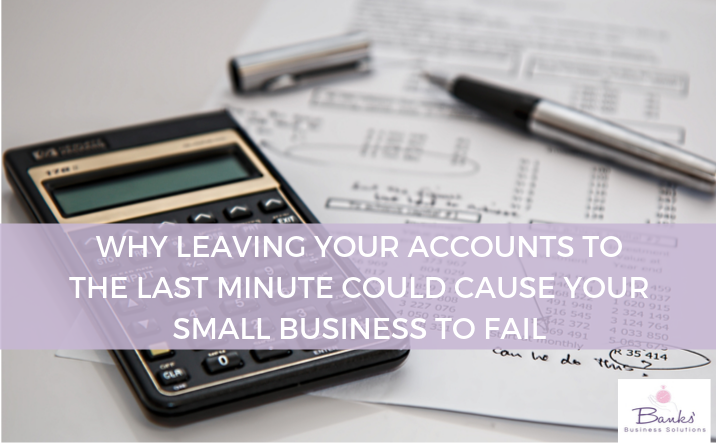Doing the accounts can be a dull and tiresome process, not to mention difficult if numbers aren’t your strong point.
So, like many other business owners, you probably leave them till the last minute and panic when it comes to self-assessment time, or send them off to your trusty accountant to take care of things for you.
With that in mind, I’m going to ask you a question…
Do you know the exact state of your business finances and forecast for the months ahead?
You have a legal obligation as a business owner to have an accurate overview of your business finances at all times. But there’s a better reason to understand what’s going on too – staying afloat.
It’s estimated that up to 90% of small business failure is due to cash flow issues.
So here are my top tips for staying afloat as a small business.
1. Do your accounts regularly
You knew that was coming, didn’t you?
The only way to know if cash flow is going to be a problem is by regularly taking care of your accounts (or if you outsource it, getting frequent updates and reports on the state of play).
A great way of keeping an eye on things if you aren’t good with figures is by creating charts (most accounting software will let you do this). A simple pie chart or bar graph enables you to see at a glance if income is going up as it should, or if those expenses are getting out of hand.
If you’re not good with numbers and struggle with accounts, it is worth outsourcing to a bookkeeper or accountant specialising in small businesses earlier rather than later – you’ll save from it in the long run.
2. Keep on top of your invoicing
The sooner you invoice, the sooner you’ll get paid.
It might be easier for you to set one day a month aside for invoicing your clients, but that means you’re not getting the income into your business the other 27-30 days of the month.
Generally, clients pay late if paying by invoice (rather than standing order/retainer) so it is something you need to keep on top of.
Spend twenty a minutes a day ensuring your invoicing is up to date and sending friendly reminders to late payers, it really doesn’t need to take any longer than that.
Online invoicing is one of the easiest ways of achieving this, and most free accounting software will allow you to set this up quickly
3. Have a long-term business plan
If you don’t know where you want your business to be in six months, a year, five years’ time – you’re going to find it difficult getting there.
The same goes for your finances – if you want to be earning twice as much revenue in a year’s time than you are now, you need to put it in your business plan, and identify ways of achieving that.
A month-by-month plan can help you plan for recurring expenses (like annual professional fees, WordPress themes and plugins, etc.) – so you know what’s going to hit your account, and when.
And make sure you review, evaluate and amend it as you meet your goals and objectives.
4. Look at your current spending habits
Take a good look through your expenses and see if you can identify any savings – is another company doing the same thing for less? Can you save money by switching to an annual plan rather than paying monthly?
One of the biggest expenses is the merchant fees on accepting payment – you know what I mean when you look at your PayPal or Stripe transactions and see the chunks of money they take off things. There are alternatives out there that might be better for you and your clients.
Whenever a contract comes up for renewal, take a look at what else is available and make sure you’re getting the best possible value for money.
5. Don’t rely on one or two clients
It’s quite possible that two clients are enough to keep your business afloat. You have a great working relationship and can’t foresee anything changing.
Then something happens that pulls them out of their business – would your business survive?
Sometimes, we get complacent as business owners, when we’re getting enough revenue to meet our expenses and pay a decent wage, we often stop marketing and looking for new clients.
But that’s an ‘eggs in one basket’ scenario waiting to happen, it’s better to be constantly attracting new clients to your business and scaling up by taking on employees or associates when work goes beyond your capacity.
If you feel that taking on too many clients would stretch you too thin – that’s the time to be looking at outsourcing tasks that make you spend time on your business, rather than in your business.
6. Make sure you have a business savings account
It’s recommended that for every payment you receive – you put aside 30% into a business savings account.
That’s to make sure you always have a cash reserve available if anything unexpected happens, or you get hit with a bigger tax bill then you were expecting.
It can be tempting to avoid doing this when you’re a small business struggling to get by from payment to payment, but putting money aside is one of the best ways of counteracting potential cash flow issues.
Keeping on top of your accounts and changing a few things in the way you manage your business finances can go a long way in preventing your business becoming another cash flow casualty. If you don’t use an accountant it can be worth seeking one out for a consultation to see if there’s anything else, you can be doing to keep your business going strong and your finances healthy.

